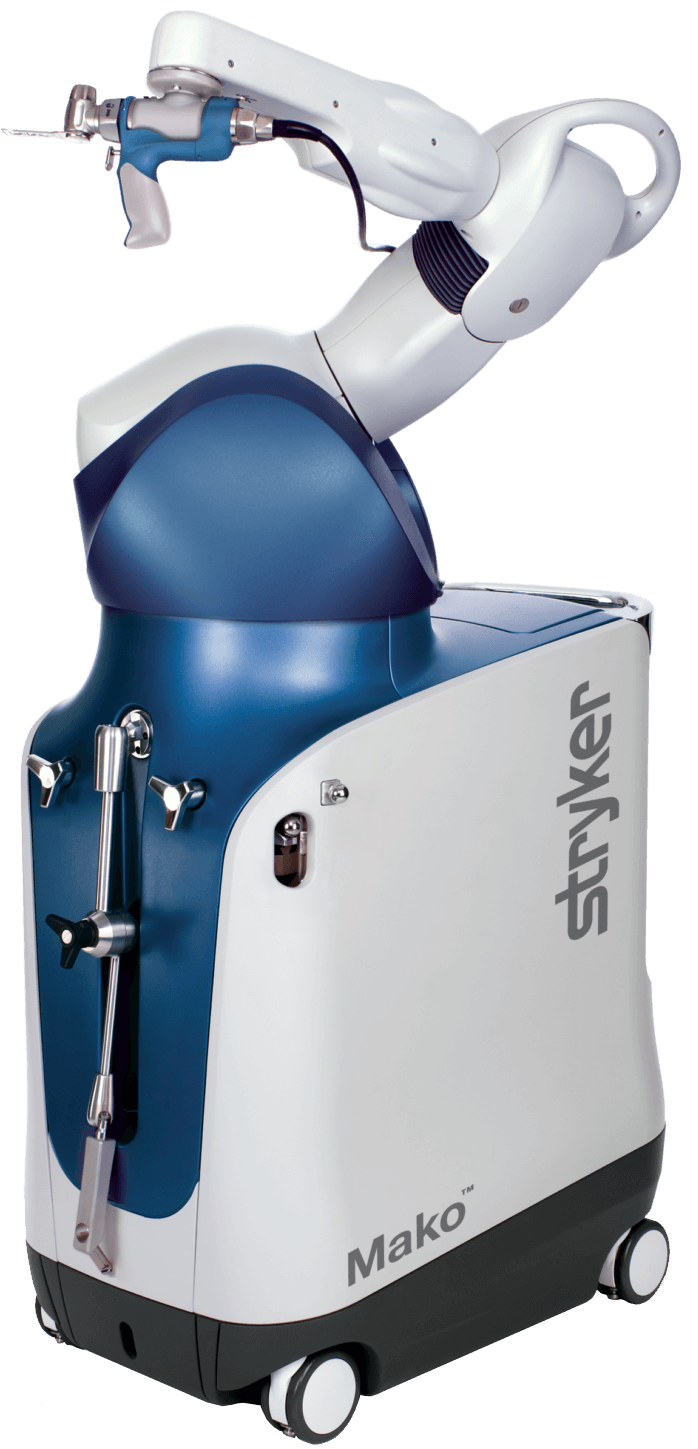Knee Replacement
Knee replacement can help reduce chronic pain, improve function, and increase your range of motion. If your knee has been damaged by conditions like advanced arthritis, severe fractures, or traumatic injury, replacing the knee joint can provide relief.



What is knee replacement surgery?
Knee replacement surgery, also called knee arthroplasty, involves replacing all or part of the knee joint with an artificial joint (prosthesis). During the procedure, damaged cartilage and bone are removed and replaced with man-made components designed to restore function and relieve pain. Depending on your needs, the prosthesis may include a metal piece for the lower end of the thigh bone (femur), a combination of metal and durable plastic for the upper end of the shin bone (tibia), and a strong plastic piece for the back of the kneecap (patella). Most artificial knees combine metal and plastic parts, though some may use metal on metal, ceramic on ceramic, or ceramic on plastic for long-lasting results.
The surgery is generally done in the following way:
- After you receive anesthesia, your surgeon will make a cut over your knee to open it up. This cut is often 8 to 10 inches long.
- The surgeon moves your kneecap (patella) out of the way, then cuts the ends of your thigh bone and shin (lower leg) bone to fit the replacement part.
- The underside of your kneecap is cut to prepare it for the new pieces that will be attached there.
- The two parts of the prosthesis are fastened to your bones. One part will be attached to the end of your thigh bone and the other part will be attached to your shin bone. The pieces can be attached using bone cement or screws.
- The underside of your kneecap is attached using a special bone cement.
- The surgeon repairs your muscles and tendons around the new joint and close the surgical cut.
Why is the procedure performed?
The most common reason to have a knee joint replaced is to relieve severe arthritis pain. Your doctor may recommend knee joint replacement if:
- You are having pain from knee arthritis that keeps you from sleeping or doing normal activities.
- You cannot walk and take care of yourself.
- Your knee pain has not improved with other treatment.
- You understand what surgery and recovery will be like.
Most of the time, knee joint replacement is done in people age 60 and older. Younger people who have a knee joint replaced may put extra stress on the artificial knee and cause it to wear out early and not last as long.
What to expect before, during, and after knee surgery?
Partial and total knee replacement with the Mako Robotic-Assisted Surgical System
The orthopedic surgeons at Newman Regional Health utilize Mako robotic-arm assistance to enhance the precision of knee surgery. Before the procedure, a CT scan creates a 3D model of your knee so the surgeon can plan exact implant placement and alignment. During surgery, the robotic arm helps the surgeon remove damaged bone and cartilage while protecting soft tissues.
Patients generally experience less pain, better function, and quicker recovery compared to traditional knee replacement — in part because the procedure is more accurate and causes less trauma to surrounding tissues.











